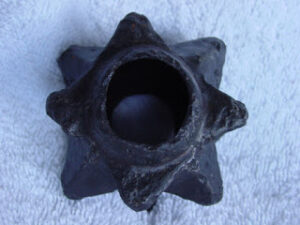Recently I challenged a friend : “I do not think that word means what you think it means!”
Recognising the reference, he responded “Inconceivable!”
This provoked an interesting discussion on redundant terms. To call something inconceivable you need to be able to conceive its existence or possibility, so it cannot therefore be “inconceivable”. “Impossible” is related term. A true scientist knows that very little is actually impossible, just that some things are very, very, very (to the nth power) unlikely. “Unbelievable” is of a similar vein. When someone says something is unbelievable or more accurately hard to believe they are actually telling you more about themselves than the subject of discussion. “I find that hard to believe” has an interesting aspect of arrogance, implying something is less likely because the observer lacks sufficient imagination or education to grasp the concept.
A phrase that particularly makes my teeth grind is “common sense”. “Common sense” does not exist. It will be a very happy day when this irritating and pointless phrase drops from the language.
Generally when someone uses this phrase they are implying some idea or piece of knowledge is self-evident or universally known. But if you think about it, if that were the case we would not need a term to describe it, nor would we so often complain that common sense was not used. The most accurate definition for common sense might be “What is blindingly obvious to one person but is not to another”.
A recent panel show had the question “Do you think you have common sense? Did most of the audience answer yes? True or False?” One of the panellists, a woman admired for her intelligence began talking about how she broke her nose walking down the stairs in high heels and a rucksac. She then said she likes to use a rucksac because she “Likes to walk with her hands in her pockets”. Walking with your hands in your pockets so you cannot defend yourself or save yourself if you trip on the stairs is obviously pretty dumb. If “common sense” existed, no one would do this. Most of the audience, predictably answered “yes”, they did think they had common sense. They are mistaken, of course, because they cannot have what does not exist. Like most of the population, the majority of the members of the audience probably walk around staring at their phones not looking where they are going, so would not be considered to have common sense if such a thing did exist (which it does not!)
Common sense is most often used in phrases like “Why didn’t you do that bit first, it is just common sense?” Logically such a statement could never be made if common sense was self-evident or universally-known knowledge. “Common sense” is often used as a weapon when the speaker thinks someone has been a bit of a dick and often that extends to the speaker’s manners too. You probably begin to appreciate that use of the term “common sense” is often inherently insulting in some way. Common sense does not exist. Using “common sense” to justify your argument is about as relevant as a character reference from the Easter Bunny! Claiming something is common sense is often just being rude and actually just branding yourself as a fool.
Scratch the surface of a claim of common sense and arrogance is usually just below.
Advertisers like to use the term common sense in another way. If they call something “common sense” they can create an impression that not agreeing with the idea they are offering makes you foolish. No one wants to be considered foolish, therefore you should agree with the “common sense” idea or buy the product with “common sense features”. By now you should have accepted the concept that common sense does not exist so you will recognise that anything offered to you as being common sense is probably a con of some kind















